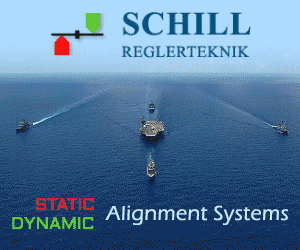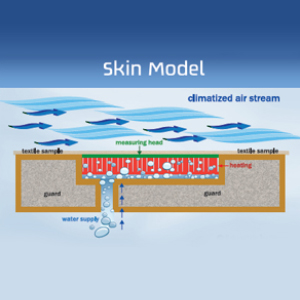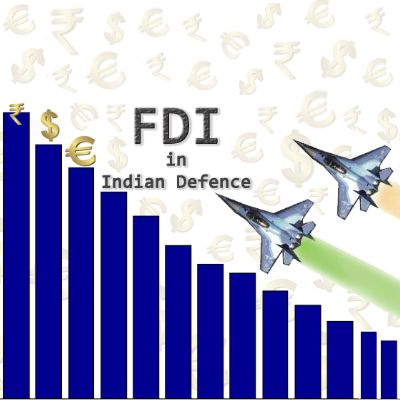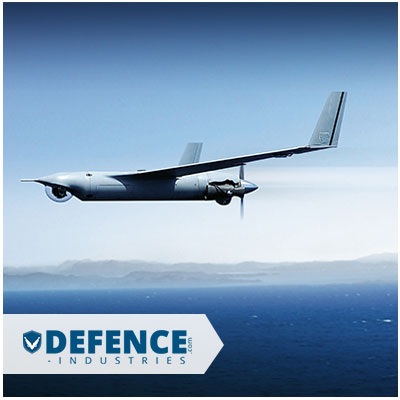Skybound Tech: Navigating the World of Aviation Electronics
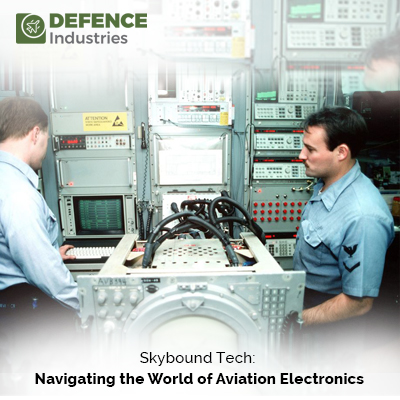
Importance of Aviation Electronics in Modern Aircraft
Aviation electronics play a crucial role in modern aircraft, transforming the way pilots navigate the skies and ensuring a safe and efficient flight. These advanced systems are designed to provide accurate and reliable information, enabling pilots to make informed decisions in real-time.
One of the key aspects of aviation electronics is avionics, which encompasses a range of electronic systems and devices that control and monitor various aircraft functions. From flight management systems to autopilots, avionics is the backbone of modern aircraft operations. These systems not only enhance safety but also improve efficiency by automating certain tasks and reducing pilot workload.
Another important aspect of aviation electronics is navigation systems. These systems utilize advanced technologies such as GPS (Global Positioning System) and inertial navigation to provide precise positioning and guidance to pilots. With the help of navigation systems, pilots can accurately determine their aircraft's location, plan routes, and navigate through challenging weather conditions.
Communication tools are also a vital part of aviation electronics. These systems enable pilots to communicate with air traffic control, other aircraft, and ground personnel. Efficient communication is essential for maintaining situational awareness, coordinating flights, and ensuring smooth operations.
In conclusion, aviation electronics play a critical role in modern aircraft, contributing to safety, efficiency, and performance. These advanced systems, including avionics, navigation systems, and communication tools, enable pilots to navigate the skies with confidence and precision.
A) Types of Aviation Electronics Systems
Aviation electronics systems can be categorized into different types, each serving a specific purpose in aircraft operations. Let's explore some of the key types of aviation electronics systems:
Avionics Systems: Avionics systems refer to the electronic systems and devices that control and monitor various aircraft functions. These systems include flight management systems, autopilots, electronic flight instrument systems (EFIS), engine monitoring systems, and more.
Avionics systems play a crucial role in enhancing safety, improving efficiency, and providing pilots with accurate and reliable information.
Navigation Systems: Navigation systems are responsible for providing pilots with accurate positioning and guidance. These systems utilize advanced technologies such as GPS and inertial navigation to determine the aircraft's position, plan routes, and facilitate navigation.
Examples of navigation systems include GPS receivers, VOR (VHF Omnidirectional Range) systems, and inertial navigation systems.
Communication Systems: Communication systems enable pilots to communicate with air traffic control, other aircraft, and ground personnel. These systems ensure efficient and effective communication, allowing for the exchange of vital information and coordination of flight operations. Communication systems include radios, transponders, and satellite communication equipment.
Weather Monitoring Systems: Weather monitoring systems provide pilots with real-time weather information, allowing them to make informed decisions and avoid hazardous weather conditions. These systems include weather radar, lightning detection systems, and weather satellite receivers.
Surveillance Systems: Surveillance systems are used to monitor and track aircraft, ensuring safe separation and accurate traffic information. These systems include radar systems, ADS-B (Automatic Dependent Surveillance-Broadcast), and TCAS (Traffic Collision Avoidance System).
These are just a few examples of the types of aviation electronics systems that are essential for safe and efficient aircraft operations. Each system plays a specific role in enhancing safety, improving efficiency, and providing pilots with the necessary information to navigate the skies.
B) Common Challenges in Aviation Electronics
Despite the advancements in aviation electronics, there are several common challenges that the industry faces. These challenges can impact the performance, reliability, and safety of aviation electronics systems. Let's explore some of the most common challenges:
Complexity: Aviation electronics systems are highly complex, consisting of numerous components and subsystems. The integration and interconnectivity of these systems can pose challenges during installation, maintenance, and troubleshooting. The complexity of these systems requires specialized knowledge and expertise.
Compatibility: Compatibility issues can arise when integrating new aviation electronics systems with existing aircraft systems. Ensuring seamless integration and compatibility between various systems is crucial to avoid performance issues and potential safety risks.
Environmental Factors: Aviation electronics systems are exposed to harsh environmental conditions, including temperature extremes, moisture, vibration, and electromagnetic interference. These factors can impact the performance and reliability of the systems, requiring robust designs and protective measures.
Regulatory Compliance: The aviation industry is heavily regulated, and aviation electronics systems must adhere to strict regulatory standards. Ensuring compliance with these standards can be challenging, requiring extensive testing, certification, and documentation.
Cybersecurity: With the increasing connectivity of aviation electronics systems, cybersecurity has become a significant concern. Protecting these systems from cyber threats and ensuring data security is essential to maintain the integrity and safety of aviation operations.
Addressing these challenges requires collaboration between industry stakeholders, including manufacturers, operators, and regulatory bodies. By continuously innovating and refining aviation electronics systems, the industry can overcome these challenges and ensure safe and efficient aircraft operations.
C) Regulations and Standards for Aviation Electronics
The aviation industry operates under strict regulations and standards to ensure the safety and reliability of aviation electronics systems. These regulations and standards are enforced by regulatory bodies such as the Federal Aviation Administration (FAA) in the United States and the European Union Aviation Safety Agency (EASA) in Europe.
Certification Standards: Aviation electronics systems must undergo rigorous certification processes to ensure compliance with safety and performance standards. For example, the FAA requires avionics systems to meet the requirements outlined in the Technical Standard Order (TSO) documents. Compliance with these standards demonstrates that the systems meet the necessary quality and safety criteria.
Environmental Standards: Aviation electronics systems must adhere to environmental standards to withstand the harsh conditions encountered during aircraft operations. These standards define the requirements for temperature range, vibration resistance, electromagnetic compatibility, and more. Compliance with these standards ensures the systems can perform reliably in challenging environments.
Cybersecurity Guidelines: With the increasing reliance on interconnected aviation electronics systems, cybersecurity guidelines have become essential. Regulatory bodies provide guidelines and recommendations for protecting these systems from cyber threats. Compliance with these guidelines helps mitigate the risk of cyber attacks and ensures the integrity of aviation operations.
Maintenance and Inspection Requirements: Aviation electronics systems are subject to regular maintenance and inspection requirements to ensure their continued performance and safety. These requirements include routine checks, calibration, and testing to identify any potential issues and address them promptly.
Compliance with regulations and standards is crucial to ensure the safe and reliable operation of aviation electronics systems. Manufacturers, operators, and regulatory bodies work together to establish and enforce these standards, fostering a culture of safety and continuous improvement in the aviation industry.
D) Key Players in the Aviation Electronics Industry
The aviation electronics industry is comprised of several key players who contribute to the development, manufacturing, and implementation of advanced systems. Let's take a closer look at some of the key players shaping the industry:
Honeywell Aerospace: Honeywell Aerospace is a leading manufacturer of aviation electronics systems, providing a wide range of products and solutions for commercial and military aircraft. Their portfolio includes avionics, navigation systems, communication systems, weather monitoring systems, and more.
Garmin: Garmin is known for its expertise in navigation systems and GPS technology. They offer a range of aviation electronics products, including GPS receivers, avionics systems, and flight displays. Garmin's innovative solutions have made them a trusted name in the industry.
Rockwell Collins: Rockwell Collins specializes in avionics systems, communication systems, and cabin electronics. Their products are designed to enhance safety, improve efficiency, and provide a seamless passenger experience. Rockwell Collins is known for its cutting-edge technology and commitment to innovation.
Thales Group: Thales Group is a global leader in providing advanced solutions for the aerospace industry. They offer a wide range of aviation electronics systems, including avionics, communication systems, navigation systems, and surveillance systems. Thales Group's expertise and global presence make them a key player in the industry.
L3Harris Technologies: L3Harris Technologies is a leading provider of avionics systems and communication solutions. They offer a comprehensive portfolio of products, including flight management systems, radios, transponders, and more. L3Harris Technologies is known for its advanced technology and commitment to customer satisfaction.
These are just a few examples of the key players in the aviation electronics industry. Each of these companies brings unique expertise and innovative solutions to the table, driving the industry forward and shaping the future of aviation electronics.
E) Emerging Trends in Aviation Electronics
The aviation electronics industry is constantly evolving, driven by technological advancements and changing market demands. Let's explore some of the emerging trends that are shaping the future of aviation electronics:
Connectivity and Data Sharing: The aviation industry is increasingly embracing connectivity, allowing for real-time data sharing between aircraft, ground systems, and other stakeholders. This connectivity enables enhanced situational awareness, improved decision-making, and more efficient operations.
Artificial Intelligence and Machine Learning: Artificial intelligence (AI) and machine learning (ML) are being incorporated into aviation electronics systems to enhance performance, automate certain tasks, and improve predictive capabilities. AI and ML algorithms can analyze vast amounts of data and provide valuable insights to pilots and operators.
Electric and Hybrid-Electric Aircraft: The growing interest in sustainable aviation has led to the development of electric and hybrid-electric aircraft. These aircraft rely on advanced propulsion systems and energy storage solutions, which require innovative aviation electronics systems to ensure efficient and reliable operations.
Augmented Reality and Virtual Reality: Augmented reality (AR) and virtual reality (VR) technologies are being integrated into aviation electronics systems to enhance pilot training, maintenance procedures, and flight operations. AR and VR can provide realistic simulations, allowing for immersive training and improved situational awareness.
Advanced Human-Machine Interfaces: Human-machine interfaces are evolving to provide more intuitive and user-friendly interactions. Touchscreen displays, voice recognition systems, and gesture-based controls are becoming more prevalent, making it easier for pilots to interact with aviation electronics systems.
These emerging trends are reshaping the aviation electronics industry, paving the way for safer, more efficient, and technologically advanced aircraft operations. As the industry continues to innovate, these trends will play a significant role in shaping the future of aviation.
F) Training and Education for Aviation Electronics Professionals
The field of aviation electronics requires highly skilled professionals who possess specialized knowledge and expertise. Training and education play a crucial role in developing these skills and ensuring the competence of aviation electronics professionals. Let's explore the training and education opportunities available:
Aeronautical Engineering Programs: Aeronautical engineering programs provide a comprehensive understanding of aircraft systems, including aviation electronics. These programs cover topics such as avionics, navigation systems, communication systems, and more. Aeronautical engineering programs are offered by universities and technical institutes worldwide.
Aviation Electronics Technician Programs: Aviation electronics technician programs focus specifically on the installation, maintenance, and troubleshooting of aviation electronics systems. These programs provide hands-on training and practical skills necessary for working with avionics, navigation systems, and communication tools.
Manufacturer Training Programs: Many aviation electronics manufacturers offer training programs for professionals who work with their specific products. These programs provide in-depth knowledge of the manufacturer's systems, ensuring that professionals are well-equipped to install, maintain, and troubleshoot their products.
Continuing Education and Certifications: Continuing education and certifications are essential for aviation electronics professionals to stay updated with the latest advancements and best practices. Organizations such as the Aircraft Electronics Association (AEA) offer certification programs that validate the skills and knowledge of professionals in the field.
On-the-Job Training and Apprenticeships: On-the-job training and apprenticeship programs provide hands-on experience and mentorship opportunities for individuals interested in pursuing a career in aviation electronics. These programs allow individuals to gain practical skills and industry-specific knowledge under the guidance of experienced professionals.
The training and education opportunities in aviation electronics are diverse, catering to individuals at different stages of their careers. Whether pursuing a degree in aeronautical engineering or seeking specialized training in avionics systems, these programs provide the necessary foundation for a successful career in the field.
G) Maintenance and Troubleshooting of Aviation Electronics
Maintenance and troubleshooting are essential aspects of ensuring the performance, reliability, and safety of aviation electronics systems. Let's explore the key considerations for maintenance and troubleshooting:
Routine Inspections and Checks: Regular inspections and checks are necessary to identify any potential issues before they escalate. These inspections include visual inspections, functional tests, and calibration checks to ensure the systems are functioning within the specified parameters.
Scheduled Maintenance: Aviation electronics systems require scheduled maintenance at specific intervals to ensure their continued performance and reliability. This maintenance includes software updates, component replacements, and system calibration.
Diagnostic Tools and Test Equipment: Diagnostic tools and test equipment play a crucial role in troubleshooting aviation electronics systems. These tools enable technicians to identify and isolate issues quickly, minimizing downtime and ensuring efficient repairs.
Documentation and Record-Keeping: Proper documentation and record-keeping are essential for effective maintenance and troubleshooting. This includes maintaining detailed records of maintenance activities, repairs, and component replacements. These records help track the history of the systems and provide valuable information for future troubleshooting.
Collaboration with Manufacturers and Support Services: Collaboration with manufacturers and support services is crucial for complex maintenance and troubleshooting tasks. Manufacturers often provide technical support and guidance to technicians, ensuring accurate and efficient troubleshooting.
Continuous Training and Professional Development: The field of aviation electronics is constantly evolving, and technicians should prioritize continuous training and professional development to stay updated with the latest advancements and ensure optimal performance in their roles.
Conclusion:
Aviation electronics are indispensable in modern aircraft, enhancing safety, efficiency, and performance. Avionics, navigation systems, communication tools, and other electronic systems play vital roles, supported by key players like Honeywell Aerospace, Garmin, Rockwell Collins, Thales Group, and L3Harris Technologies. Despite challenges like complexity and cybersecurity, adherence to regulations and continuous innovation ensure safe and reliable operations. Training programs and maintenance practices are essential for professionals to navigate this dynamic industry successfully.




